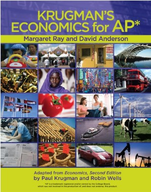Labor costs represent a large percentage of total costs for many firms. According to a
Chapter 0, Problem 13(choose chapter or problem)
Labor costs represent a large percentage of total costs for many firms. According to a September 1, 2007, Wall Street Journal article, U.S. labor costs were up 0.9% during the preceding three months and 0.8% over the three months preceding those. a. When labor costs increase, what happens to average total cost and marginal cost? Consider a case in which labor costs are only variable costs and a case in which they are both variable and fixed costs. An increase in labor productivity means each worker can produce more output. Recent data on productivity show that labor productivity in the U.S. nonfarm business sector grew 2% for each of the years 2005, 2006, and 2007. Annual growth in labor productivity averaged 1.5% from the mid1970s to mid-1990s, 2.6% in the past decade, and 4% for a couple of years in the early 2000s. b.When productivity growth is positive, what happens to the total product curve and the marginal product of labor curve? Illustrate your answer with a diagram. c. When productivity growth is positive, what happens to the marginal cost curve and the average total cost curve? Illustrate your answer with a diagram. d.If labor costs are rising over time on average, why would a company want to adopt equipment and methods that increase labor productivity?
Unfortunately, we don't have that question answered yet. But you can get it answered in just 5 hours by Logging in or Becoming a subscriber.
Becoming a subscriber
Or look for another answer
